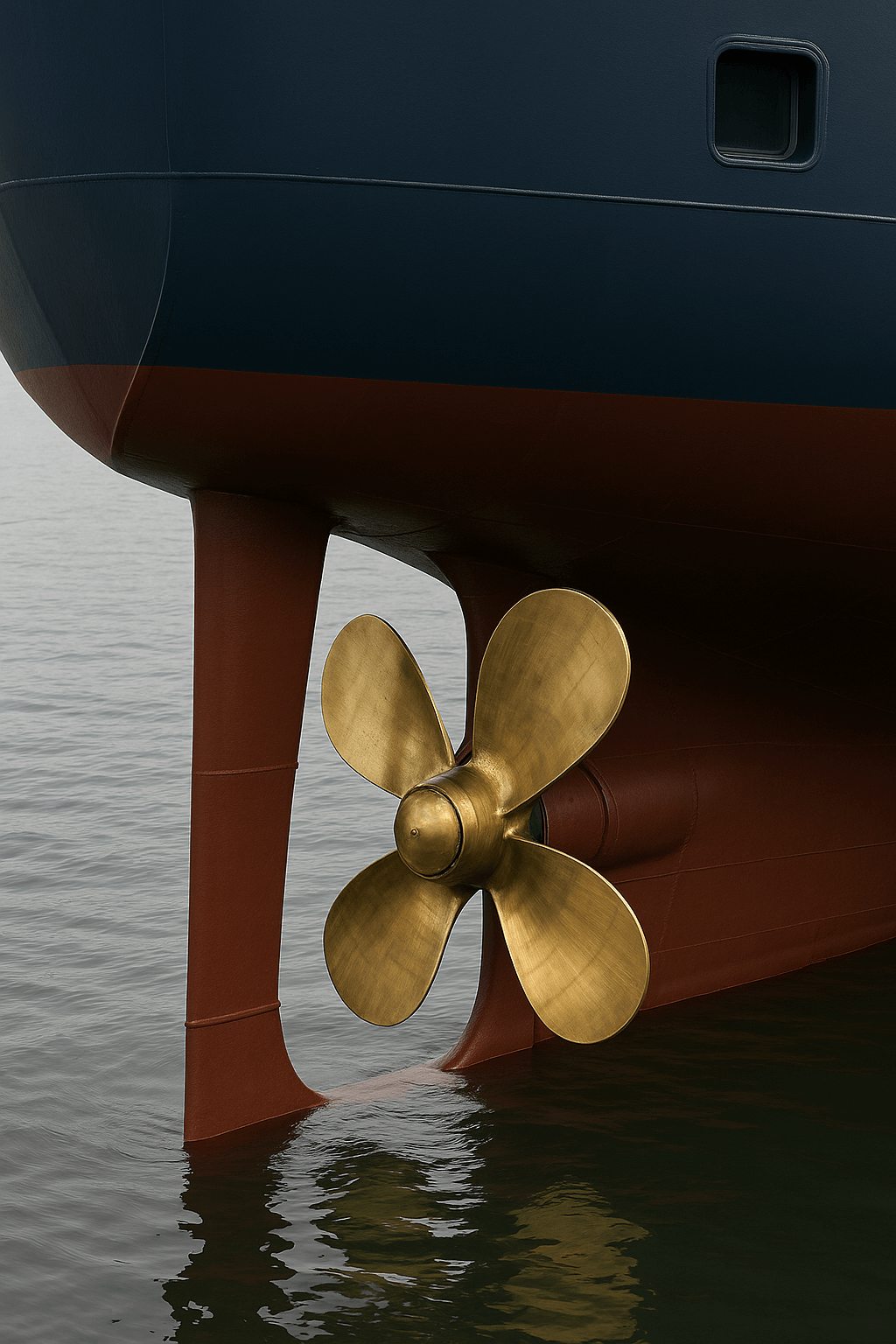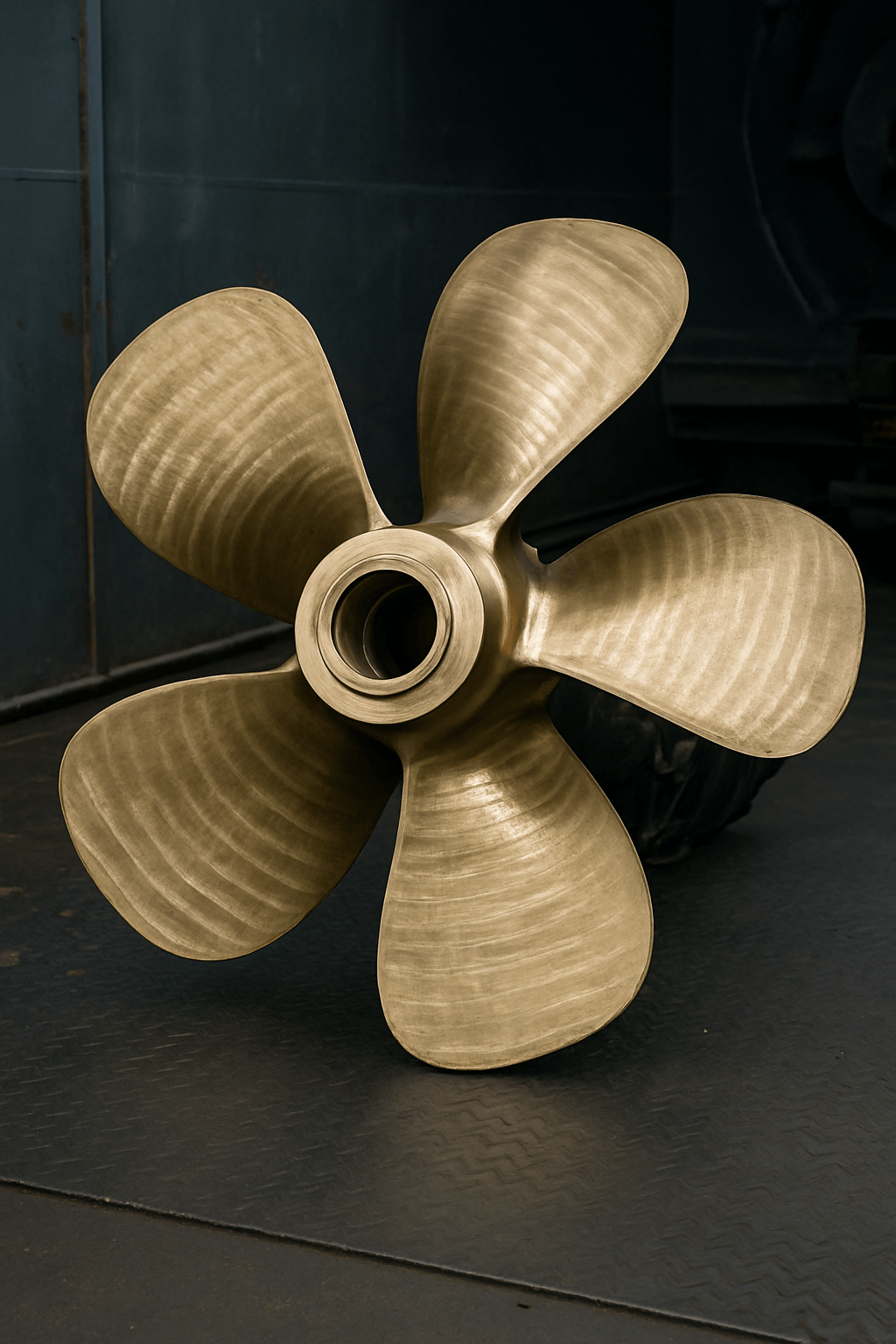Customs Clearance of Ship & Boat Propellers and Blades in Iran (HS Code + Documents & Permits)

For estimating the time and cost of clearing ship & boat propellers and blades, get in touch with Saba Tarkhis experts.
Instant, Free Consultation1) Types and Applications of Ship & Boat Propellers
- Aluminum alloys: Lightweight and corrosion-resistant, suitable for light and fast boats.
- Stainless steel (SS): Highly resistant to corrosion and pressure, suitable for heavy and large ships.
- Bronze alloys: High resistance to corrosion and wear, suitable for various marine applications including commercial and military ships.
- Nickel–Aluminum–Bronze (NiAlBr) alloys: Used in military ships and high-speed boats due to excellent resistance to corrosion and fatigue.
Passenger ships: In these vessels, propellers should be designed to ensure maximum comfort with minimal vibration and noise for passengers.
Recreational boats: Propellers of recreational boats are usually designed for high speed and dynamic performance.
Military ships: Propellers of military ships require the highest level of strength and efficiency, as these vessels operate in critical and combat environments.
Fishing boats: Propellers of fishing boats must withstand harsh marine conditions and offer durability under continuous use.
2) Required Permits for Clearing Ship & Boat Propellers and Their Blades
Technical Permit from the Office of Rail & Marine Industries
Currency Allocation Permit from the Office of Rail & Marine Industries
3) Key Technical Considerations in Clearing Ship & Boat Propellers
1. Customs Tariff (HS Code)
2. Required Documents for Clearance
- Customs declaration: Documentation containing complete information about the goods, including type, weight, value, and tariff code.
- Commercial Invoice: Includes financial details of the transaction, price, payment terms, and seller/buyer details.
- Packing List: Detailed packaging information including number of units, gross and net weight, and package dimensions.
- Certificate of Origin: Indicates the country of manufacture and may directly affect customs tariffs.
- Quality and conformity certificates: In specific cases, certifications related to international standards such as ISO or CE, as well as conformity with maritime standards like IMO, are mandatory.
3. Compliance with International Standards
ISO (International Organization for Standardization): Standards related to material quality and manufacturing processes.
IMO (International Maritime Organization): Standards related to vessel safety and performance at the international level.
ABS (American Bureau of Shipping): Special standards for commercial and military ships.
DNV GL (Norwegian-German maritime classification society): One of the most reputable standards for marine equipment.
4. Technical Specifications of Propellers and Blades
Dimensions: Propeller dimensions are directly related to vessel performance. Incorrect sizing can lead to increased fuel consumption or reduced efficiency.
Materials: Materials must match operating and environmental conditions. For example, using aluminum propellers in saltwater is not recommended due to corrosion.
Number of blades: The number of blades affects efficiency and speed. Four- or five-blade propellers are typically used for larger vessels, while three-blade propellers are used for high-speed boats.
Special import conditions: Some countries may have restrictions or specific regulations for importing propellers and blades of ships and boats. These may include mandatory compliance with certain standards, the need for safety/health certificates (where materials could contain harmful substances), or environmental protection rules. Aligning these requirements with Iranian customs regulations and the country of origin is highly important.
4) Exporting/Importing Countries and Trade Volume
Countries Exporting and Importing Ship & Boat Propellers
China: As one of the world’s largest manufacturers, China has the largest share of exports of these parts to Iran.
South Korea: With advanced technology and high quality, it is one of the main sources of ship and boat propellers and blades for Iran.
Germany: Known for high-quality production aligned with strict international standards.
Japan: Another leading country producing high-quality propellers and blades.
Importing countries: In addition to meeting domestic demand, Iran exports some of these parts to neighboring countries such as Iraq, the United Arab Emirates, and Central Asian countries.
Import and Export Volumes
5) Best Practices for Clearing Ship & Boat Propellers through Iranian Customs
Preparation and submission of complete documents: Ensure all required documents—including import permits, shipping documents, and safety/packaging certificates—are prepared and submitted to customs. Work with a specialized customs broker: Choosing an experienced broker who knows the clearance processes for marine parts can speed up the procedure.
Payment of customs duties and taxes: Accurately calculate and pay applicable duties and taxes on time to avoid delays.
Compliant packaging and transport: Use proper packaging considering the technical nature and weight of the part and adhere to international transport standards. This is a key requirement in clearing ship and boat propellers.
| Goods | Short Description | HS Code |
|---|---|---|
| Ship/boat propeller & blades | Propulsion part; alloyed (NiAlBr/SS/Al/Bronze) | 848710 |
Exact classification depends on material, number of blades, diameter, application, and installation/spare status.
Need precise HS Code determination, marine permits, and document preparation? Our team manages the case end-to-end.
Request a Proforma/Quotation
Frequently Asked Questions
What is the HS Code for ship/boat propellers?
Typically, ship/boat propellers fall under 848710; final determination depends on material, dimensions, and application.
What permits are required for import?
As applicable: a technical permit from the Office of Rail & Marine Industries and a currency allocation permit; also, conformity with maritime standards (IMO/ABS/DNV GL) and safety for transport/storage.
What are the packaging and transport requirements?
Compliance with UN/IMDG standards, proper lashing, heavy-load marking, corrosion/impact protection, and use of authorized vehicles for transporting heavy parts.
Premium Customs Services by Saba Brokerage
With years of experience in clearing marine goods—including ship and boat propellers and blades—we offer premium services to our clients. These include:
Specialized consulting: Our experts, fully versed in customs regulations and international standards, provide tailored advice on the best clearance methods and document preparation.
Fast and reliable follow-up: Through advanced systems and direct communication with customs authorities, your clearance process is handled swiftly and without interruption—especially crucial for sensitive parts like propellers and blades.
Document preparation and compliance: An experienced team prepares and reviews all documents required for clearing ship and boat propellers with precision, preventing any issues at customs.
Standards compliance: We ensure all your imported parts comply with the latest international standards and Iran’s domestic regulations—particularly important for marine products that must meet stringent requirements.
Post-clearance services: Beyond clearance, we provide post-clearance services such as domestic transport, repackaging, and rapid delivery to your destination.
By choosing our services for clearing ship and boat propellers, you gain the expertise of a seasoned team that addresses all your needs accurately and in the shortest possible time. We are committed to delivering high-quality services and your complete satisfaction.
.png)
